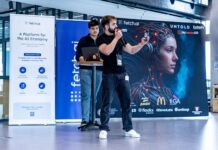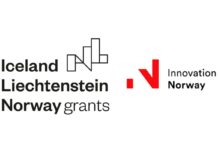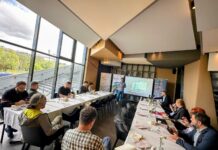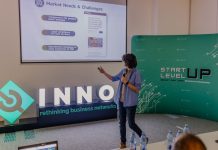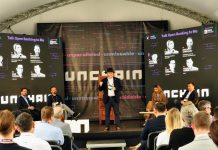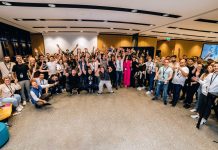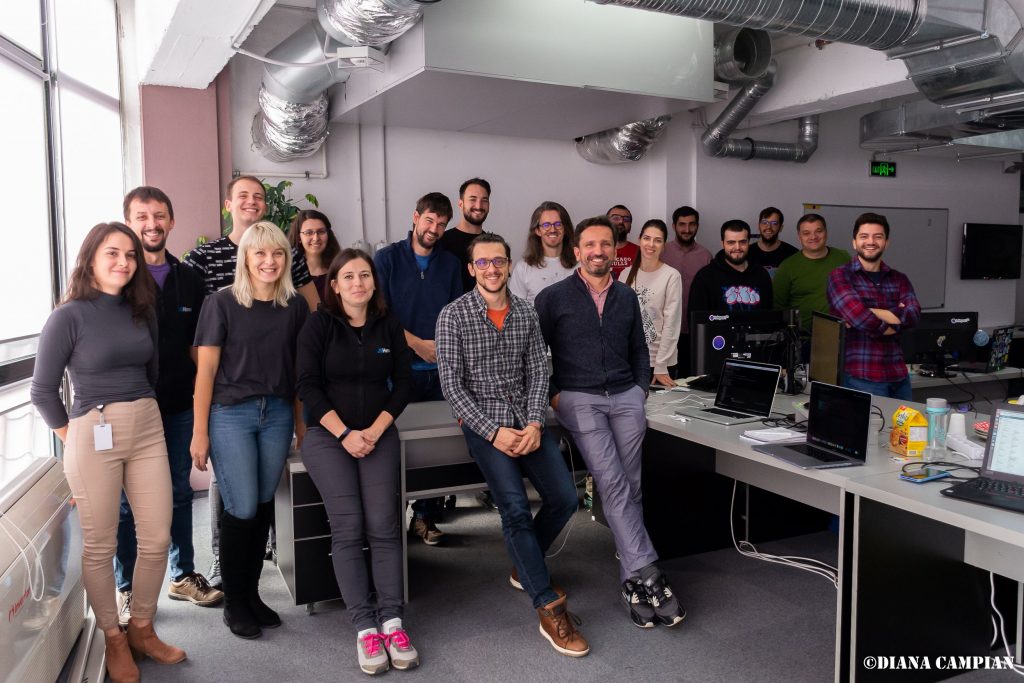
Cluj-based teleportHQ announced that it has launched the beta version of their AI-powered platform for automated generation of front-end code and design, a solution meant to keep up with the huge unmet global demand of experts in building user interfaces. The platform is addressing developers by automating their front-end work and learning their way of design, their project, and their industry scope. The project is the result of a sustained R&D effort of more than 3 years, partly financed by the European Union.
In a digital world where everything is going to be displayed on screens, there is an increasing demand of experts in building user interfaces, and there’s simply not enough front-end developers to keep up with the demand. Today, there are about 25 million developers around the world, from whom about 5-6 millions are front-end developers. There is a huge need for automation in the front-end development field in order to reduce costs and respond to the demand. teleportHQ decided to respond to this challenge by inserting machine learning in their platform.
When a user starts with an idea of making a website, they would have something that you would call “low definition information.” It is an idea or maybe a wireframe, and in order to get the final code from the wireframe there are a lot of decisions that have to be made. Usually those decisions are made by a designer then integrated by a developer, and with your intention and their knowledge and work, finally you get the website. The automation part of this process is all the knowledge that a team of experienced designers and developers from teleportHQ have put together and stored in what they internally are calling ‘processors’. One after the other, those processors take decisions about how your wireframe should be transformed into the final code.
Learning from their extended experience in front-end development, the teleportHQ team has found that many of the decisions that designers and developers do are similar; there are patterns. They’ve started to automate everything that they’ve detected as patterns, so that when a user will create a wireframe, the algorithm will “understand” the user intention, and will generate for them what should be the final result and code.
teleportHQ is now working on an engine that creates predictions, which means while you’re working, the platform will propose to you the best next steps according to the training that it has received about your own behavior in the platform. This leads to a hyper personalized experience per user.
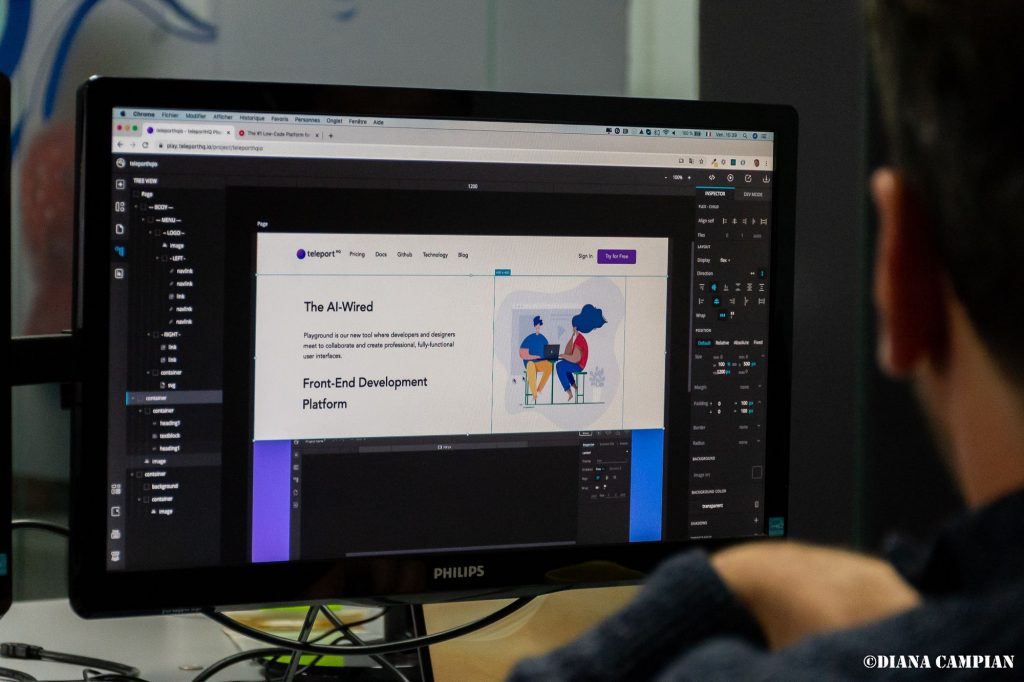
teleportHQ’s platform consists of an ecosystem composed of several parts, the most visible and understandable part being what they are calling ‘the Playground’, a SaaS platform where users can build user interfaces in a visual and efficient way.
The Playground has a wizard-like experience, what you see is what you get, but it is really advanced, meant for professional use. teleportHQ plans to add features to the platform, new experiences that are oriented for designers, content providers, and marketers. In the end, even business owners will be able to use the platform and collaborate with their peers and colleagues.
In the Playground background, a set of machine learning engines would kick in. Some of them make up the detection and transform drawings or wire frames directly into code. Other engines would make code optimizations and intermediary decisions or predictions about the user’s next actions. All these components are working together in one single ecosystem and are dramatically accelerating the speed of producing front-end development or websites.
The teleportHQ ecosystem is based on an intermediary representation format, called UIDL (an acronym for User Interface Definition Language), which could very likely become an open user interface definition language in the future. It is a JSON data structure that is code agnostic. Open source code generators are able to read this data structure and transform it into whatever type of code, supporting almost 10 frameworks to this day. On top of those two elements, the UIDL and that code generators, teleportHQ has built their platform, where you can visually do all the front-end design, with different collaboration capabilities.
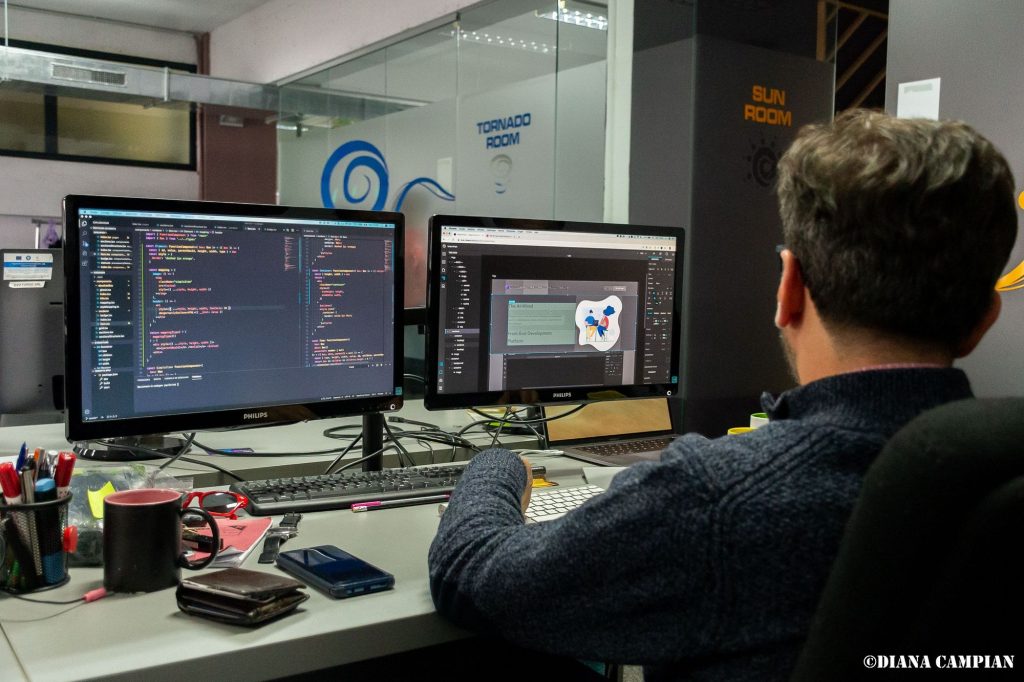
Building a user interface is quite a complex process, involving up to five different types of roles. This can include the stakeholder who wants something to be done, the product owner – a proxy for the business owner, the designer, the developer, and finally the customer who would close the feedback loop.
The discussions between all these users are usually quite hard because they have different languages and different goals. One of the most frequent issues is the interaction between designers and developers who have radically different ways of thinking. Designers think in what you would call an absolute positioning way and the developers think more in how their code should be implemented. It is a huge pain, and a solution is yet to be found for the seamless transition from design to code or from an idea/wireframe to code.
Most big companies in today’s industry, especially in the design side, consider that the way to fill this gap is to add some extensions to their design platform, in order for them to generate the code. teleportHQ believes that it should be done the other way around so they are building the bridge from the developer side towards the designers. This is the reason why they have launched this stage of the platform with the developers in the forefront of their minds. In the next iterations, they’re going to build layers that are more appealing or easier to use for designers, then add new layers that are more appealing for content owners, then features for marketeers, and finally features specifically designed for stakeholders. In the end, you need a context in which all those roles and people would meet together in order to finalize and very quickly discuss the final product. And this is the goal that teleportHQ ultimately wants; to have a completely integrated collaborative platform in which all these roles can see at any time the status of the project and if anybody is changing any part of the project, everybody else is kept in the loop.
The platform is professional-oriented and made for production, so this is the reason why they call it low-code, in the sense that is not a no-code platform (where you wouldn’t need any code knowledge). A minimum understanding of HTML and CSS will be required to use the platform, so it is a productivity tool, not just a consumer tool.
The world is going to have a very large population of digital citizens such as developers or students that want to learn front-end design, designers that want to learn to code or make a prototype, and even marketeers that want to make simple static websites. For this kind of users, teleportHQ offers a classical SaaS model in which you will need a bit of coding knowledge but you won’t have to type all the code. It will be a local platform that has hosting included.
But the most interesting cases are in the B2B world, where teleportHQ already has discussions and is doing prototypes with several leaders in the banking industry, the automotive industry, and several other industries, even in cloud hosting. As a result of using teleportHQ, those companies could be able to prototype their interfaces 10 to 50 times faster than they do today.
teleportHQ is also in discussion with VR partners that are interested in having the 2D experience that they’re building but in 3D, where instead of making the wireframes by using the mouse or taking pitches from the whiteboard, you would just draw them into the air while you are in a conference and maybe in a very close future just directly with holograms so that you don’t even need glasses or other augmenting parts. The first VR prototypes will start next year, and the first demos will be available online.
During their beta-launch event in Cluj, Paul Brie, teleportHQ’s CEO, also announced that they have started an important strategic partnership with the Katholieke Universiteit Leuven, which has one of the main experts in the front-end development industry and will start making a technological transfer of their past 10 years of R&D towards teleportHQ. This adds to the existing partnership with the Cluj-based Romanian Institute of Science and Technology which is developing advanced artificial intelligence based methods for automatically generating web pages, which may eventually be available through the teleportHQ platform and power its AI.
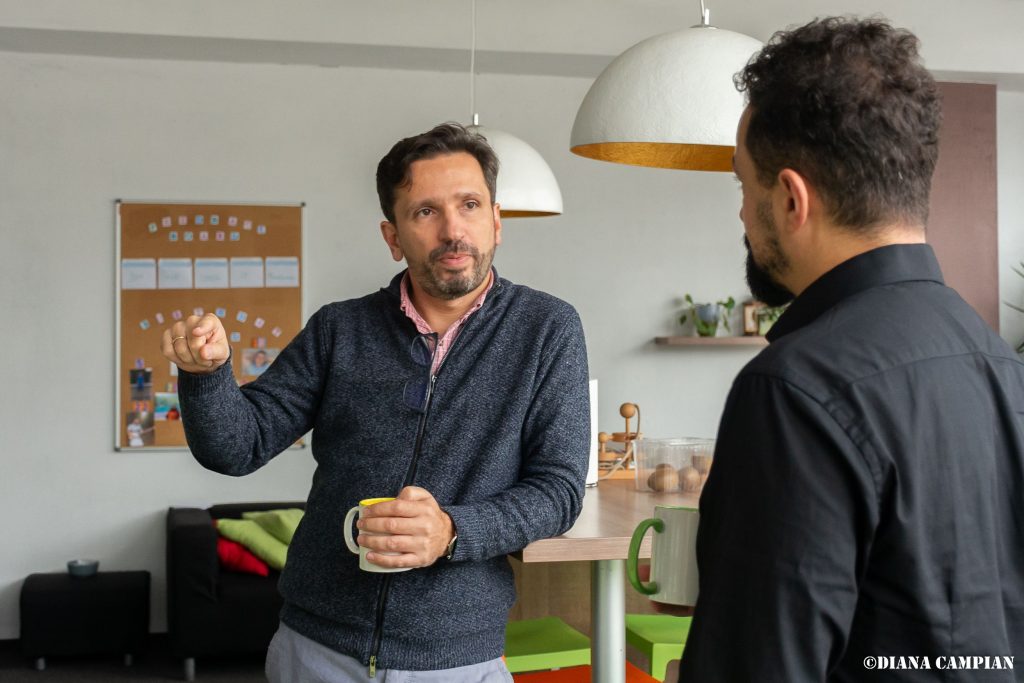
Paul Brie sees the automation of front-end development as a future mark for the city of Cluj, which could become the main hub of innovation on this topic in the world in the following years: “We could say that in Cluj there’s going to be the biggest number of people in the world that are trying to solve the problem of automated front-end development. So we believe there is a huge chance that Cluj will be known as the capital of automatic front-end development, solved by machine learning. As we make progress in these discussions, more international experts will join the efforts and recognize what we are doing as principal efforts in the industry. So I’m quite confident that in a year or two from now, what we are doing here in Cluj to solve this problem will make history.”

